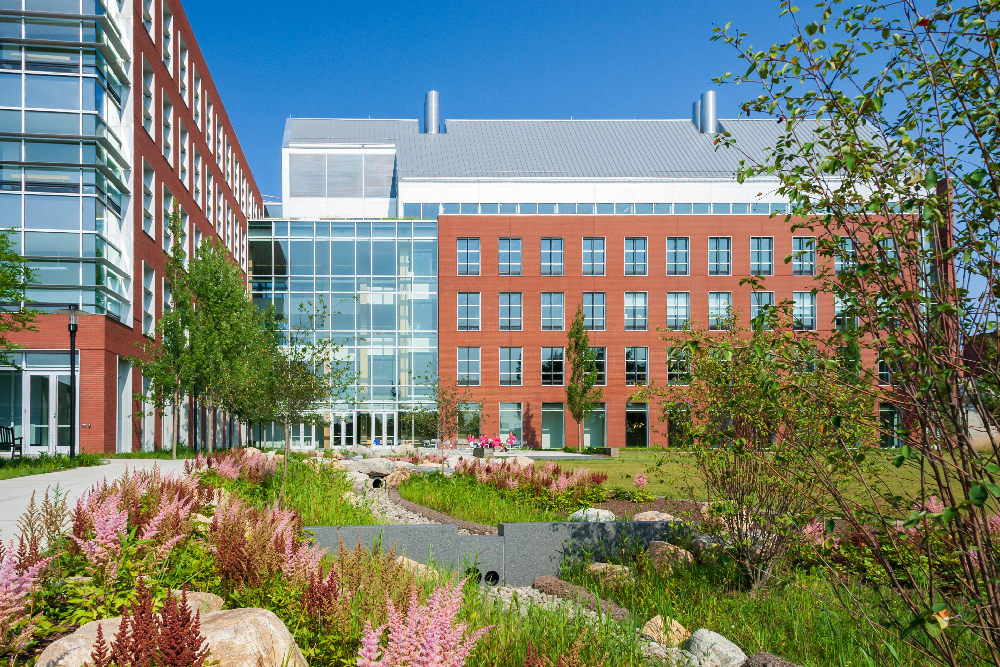As the global focus on sustainability and environmental responsibility magnifies, healthcare facilities are undergoing profound infrastructure transformations to address the modern era’s demands. With climate change increasingly impacting communities worldwide, and the recognition of the significant carbon footprint of the healthcare industry, organizations are reevaluating their approach to facility design and operations, recognizing the critical role that intelligent building controls play in achieving environmental and patient-centered objectives.
A dual purpose of sustainability and well-being
Intelligent building controls are indispensable in healthcare environments, serving dual objectives. First, intelligent building controls guide environmental sustainability efforts by revolutionizing energy consumption and minimizing waste, aligning healthcare facilities with societal efforts to combat climate change.
Secondly, these sophisticated systems foster environments conducive to the well-being of patients and staff, alike. By ensuring optimal indoor conditions, such as precise temperature regulation and effective air quality management, intelligent controls prioritize occupant comfort and health, enhancing the overall experience within healthcare facilities. This synergy between technological innovation and environmental consciousness not only elevates the standard of patient care, but also underscores the significance of healthcare institutions in promoting sustainability and well-being.
As climate change continues to pose unprecedented challenges, healthcare facilities must adapt to ensure their resilience and capacity to provide uninterrupted care. By investing in intelligent controls and sustainable practices, healthcare institutions can enhance their preparedness for extreme weather events, natural disasters and other climate-related disruptions. This safeguards patient safety and well-being, while strengthening the overall resilience of healthcare systems in the face of a changing climate. By embracing innovation and sustainability, healthcare facilities can deliver high-quality care that protects the health of both patients and the planet.
Lighting efficiency
The impact of intelligent controls is most vividly realized in the sphere of lighting. In many healthcare settings, artificial lights remain on throughout the day; this arises from the need to maintain clear visibility at all times for operational purposes, but is often the result of historical architectural design that did not prioritize or facilitate access to natural light. Yet, the implementation of intelligent building controls presents a multi-pronged solution. By employing sensors and sophisticated algorithms, these controls dynamically adjust indoor lighting in response to real-time demands.
This goes beyond simply turning lights on or off based on room occupancy — it involves fine-tuning the intensity and color temperature to mimic the natural progression of daylight, known as circadian lighting. Such an approach not only conserves energy but also harmonizes with the human body’s natural sleep-wake cycle, thereby promoting patient recovery and enhancing staff alertness. By integrating circadian lighting into healthcare environments, facilities can create a more nurturing and conducive atmosphere for healing and productivity, aligning with their overarching goals of optimal care.
Building upon this transformative approach to lighting, healthcare facilities can further enhance their efficiency and sustainability by fully harnessing natural light through daylight harvesting techniques. Through careful architectural planning, including strategic window placements, incorporation of reflective surfaces and the creation of open floor plans, facilities can effectively reduce reliance on artificial lighting during daylight hours. This not only enhances the overall health and productivity of both patients and staff, but also contributes to reducing the carbon footprint of the facility. The combination of intelligent lighting controls and architectural considerations represents a significant shift in healthcare facility design and operation. Along with providing sufficient lighting, it creates a lighting environment that aligns with human biology, patient care requirements and energy conservation goals. This fusion highlights the intersection of technology and architecture, meeting the various needs of healthcare environments.
Optimizing energy usage
In many healthcare facilities, traditional heating systems operate inefficiently, running continuously from cooler to warmer months regardless of fluctuating temperatures or internal needs. This outdated approach results in significant energy consumption. However, integrating intelligent building controls in modern healthcare facilities offers a solution. Precise temperature control, supported by IoT devices and data analytics, has clinical benefits, improving post-operative recovery and reducing complications. Additionally, intelligent systems enable comprehensive monitoring, identifying areas of energy loss and facilitating targeted interventions to optimize energy use. By leveraging these technologies, healthcare facilities can achieve sustainability goals, while enhancing operational efficiency and patient care, ultimately contributing to a greener future.
Many healthcare facilities still use unmodulated heating systems, running from cooler months well into warmer seasons, regardless of temperature fluctuations or internal needs. This one-size-fits-all approach leads to imbalances and significant energy wastage. Healthcare facilities can adopt advanced HVAC systems with intelligent controls and predictive analytics to counteract these inefficiencies. Research shows that post-operative patients recover more effectively in optimized temperature environments, reducing post-surgical complications. Advanced HVAC systems adjust heating operations based on real-time data, such as internal temperatures, occupancy patterns and external weather conditions, allowing facilities to maintain optimal conditions for patients and staff.
As the call to address climate change intensifies and healthcare demands rise, it’s evident that innovation is essential to meet today’s and tomorrow’s challenges. Intelligent building controls represent a transformative solution that enables facilities to minimize their environmental impact, elevate patient care standards and optimize operations. This shift is not just a goal to strive for; it has become essential in the evolving healthcare landscape. By embracing innovation in both design and operation, healthcare institutions can adeptly confront present challenges, while laying the groundwork for a healthier, more sustainable future. The integration of intelligent building controls represents a paradigm shift in the way healthcare facilities operate and deliver care. Healthcare facilities do not necessarily have to embrace every available technology, as the integration of specific intelligent controls alone can lead to significant enhancements. With a forward-looking approach and a commitment to continuous improvement, institutions can lead the charge toward a greener, more resilient and patient-centric healthcare ecosystem.
Images courtesy of Arcadis





